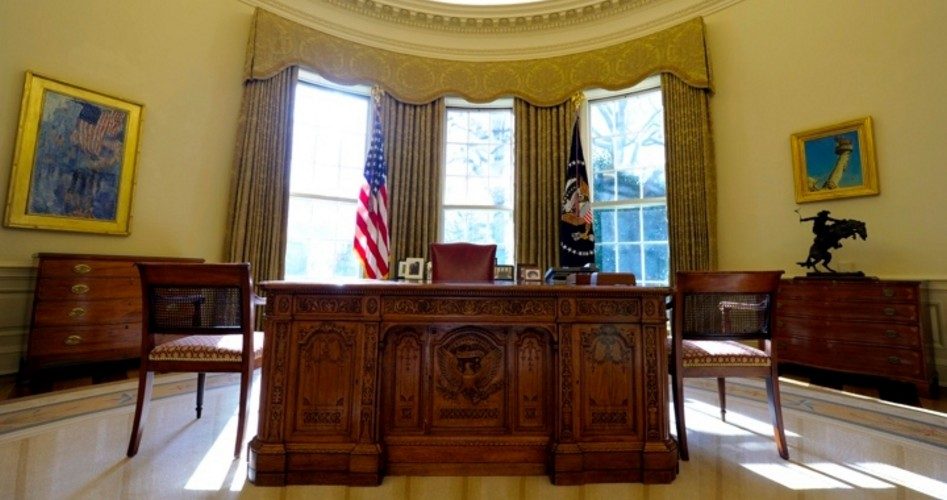
On August 15, 2014, Texas Governor Rick Perry was indicted by a Travis County grand jury for allegedly misusing the veto power granted to him by the state constitution. And on August 15, 1787, it was that very power — the power of the executive to negate acts of the legislature — that occupied the delegates’ time at the Constitutional Convention in Philadelphia.
By this point in that historic summer, the 55 or so representatives of the 12 states (Rhode Island did not participate) had hammered out most of the powers of the legislature. There were, in fact, only two questions remaining: Should the Senate be allowed to submit budget bills, and to what extent should a bill approved by both houses be subject to veto by the president?
On June 4, 1787, the Committee of the Whole (composed of all delegates acting as a committee rather than as delegates representing the states) approved the grant of veto power to the president, as well as empowering the legislature to override the executive “negative” with a two-thirds vote of both bodies. The provision finally adopted by the convention on July 21 read:
“Resolved, that the national executive shall have a right to negative any legislative act which shall not be afterwards passed, unless by two third parts of each branch of the national legislature.”
The plain language of the provision reveals that the intention of the convention was to require a two-thirds vote of the full body of each branch, rather than the assent of two-thirds of the total members present between the two houses.
Although that seems a simple enough reading of the veto override requirement, difficulty in interpretation arose when the Committee on Style presented their report on August 6. In that draft version of the Constitution, rather than copying the language as agreed to by the members of the convention, they copied a similar provision in the Massachusetts state constitution. This article read:
“But if after such reconsideration, two thirds of that House shall, notwithstanding the objections of the President, agree to pass it, it shall, together with his objections be sent to the other House, by which it shall likewise be reconsidered, and if approved by two thirds of the other House also, it shall become a law.”
Later in their report, the Committee of Detail created the confusion when it wrote, “In each House, a majority of the members shall be a quorum to do business.” Did this mean that two thirds of a quorum could override a veto?
Many of the delegates later expressed an understanding that the provision required two-thirds vote of all members, not just those present. A Supreme Court decision in the 1919 case Missouri Pacific Railroad v. Kansas held that two thirds of members present could override a veto, even if that number was well below two thirds of the total membership.
In taking up this question, James Madison tried again — unsuccessfully — to link federal judges with the president in a council that could revise bills passed by Congress. The convention rejected this proposal eight states to three, Roger Sherman declaring that he “disapproved of judges meddling in politics and parties.”
Gouverneur Morris advocated for giving the president unlimited veto power. While that sounds odd, one must remember that at this point, the president was elected by Congress, so Morris believed that “the tendency of the legislative authority to usurp on the executive” could only be checked by a president possessed of an absolute negative over legislative acts.
James Wilson, too, worried that the legislative branch was given too much power and that unless the president had a nearly unlimited veto, Congress would eventually swallow up all power, executive, judiciary, and legislative.
At this point in the afternoon, the delegates had heard enough and closed off further debate. Hugh Williamson of North Carolina made one last appeal for bolstering the president’s defense against a legislative assault on his prerogatives and moved that a three-fourths vote of the houses be required to override a veto, rather than the two thirds being considered. This motion was seconded and approved by the convention. By the end of the convention, however, Williamson felt his proposal placed “too much power in the president” and he suggested that the threshold be lowered to two thirds once again.
Curiously, the threat of the legislature usurping executive power is considered negligible today, although for decades presidents have carried out a plan to consolidate all functions of government into the hands of one “unitary” executive, aggrandizing the office of the president and reducing Congress to mere plaintiffs in lawsuits challenging that all but unlimited authority.
Photo of Oval Office: AP Images
Joe A. Wolverton, II, J.D. is a correspondent for The New American. Follow him on Twitter @TNAJoeWolverton.



